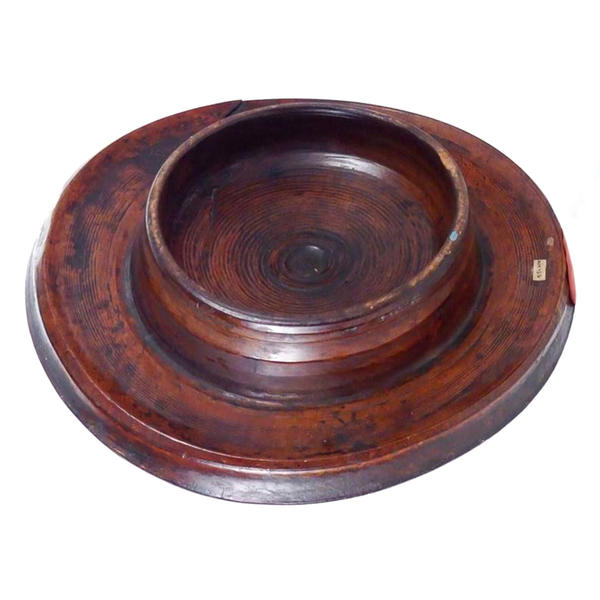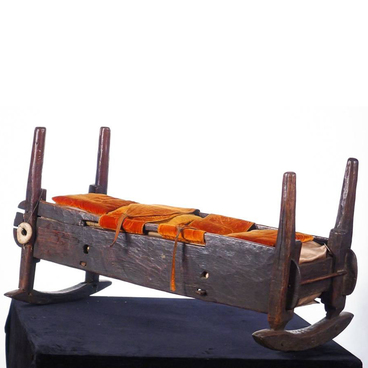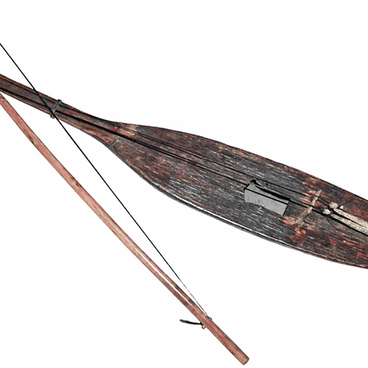In their domestic life, the Adyghes used two types of tables– traditional three-legged tables and portable tables.
Portable table
Время создания
Middle of the 19th century
Техника
Woodcarving, polishing
7
Открыть в приложении#1
Столик походный
#4
#2
The portable table had an interesting design: it was smooth on the edges and had boards in the middle forming a handy bowl for hot food.
#5
Portable tables were mainly made from pear wood. After treatment, it acquired a deep reddish colour and, according to the Adyghe pagan beliefs, became ‘kind’. When the table was ready, it was branded with a family coat of arms, tamga.
From time immemorial, the Circassians often were at war as the Caucasus was an object of continuous external expansion. Consequently, the life of the Adyghe people was to a large extent militarised, and they made some of their household articles, a table for one, such that they could be easily taken to a long expedition and fastened to the saddle.
From time immemorial, the Circassians often were at war as the Caucasus was an object of continuous external expansion. Consequently, the life of the Adyghe people was to a large extent militarised, and they made some of their household articles, a table for one, such that they could be easily taken to a long expedition and fastened to the saddle.
#8
The Circassian warriors were used to eating well both in peaceful times and at war, therefore they had developed a set of staple foods to be taken on an expedition called g’omyl, which can be translated as a “nourishing product”. All the foodstuffs from that set were rich in calories, could be kept for a long time, did not take much space, and were cooked fast.
The basis of g’omyl was dried meat soup, smoked sausage and cheese, honey-boiled pastry, wheat and maize cereals, oil and condiments. The Adyghe warrior would always have a stock of millet, farro and wheat cakes fried in oil, and k’urambyi biscuits made from wheat flour with honey.
#9
Every participant in the military expedition was entitled to a g’omyl ration of his own which was to be approved by the squad commander. He also determined the amount and composition of each meal.
The Adyghe warriors took their meals only when halted and only all together. If the conditions allowed, they made a fire and cooked hot food, for example, boiled dried meat soup. It was a powder-like mass including wheat, ground meat, dried broth and spices. One portion of thick, delicious and nutritious soup required only a pinch of such powder. When on the march, water for the soup was brought from a nearby water reservoir in leather bags on horseback.
The Adyghe warriors took their meals only when halted and only all together. If the conditions allowed, they made a fire and cooked hot food, for example, boiled dried meat soup. It was a powder-like mass including wheat, ground meat, dried broth and spices. One portion of thick, delicious and nutritious soup required only a pinch of such powder. When on the march, water for the soup was brought from a nearby water reservoir in leather bags on horseback.
читать дальшескрыть
00:00
00:00
1x
Portable table
Время создания
Middle of the 19th century
Техника
Woodcarving, polishing
7
Открыть в приложении
Поделиться



